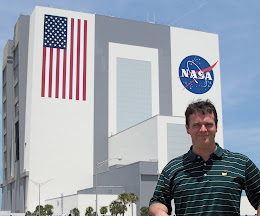 |
| NASA Orbiting Carbon Observatory2 mission lifts-off on July 2. (NASA) |
ATLANTA -- A NASA spacecraft designed to study the build up of carbon dioxide within earth's atmosphere was successfully launched into orbit on Tuesday beginning a two year mission to understand climate change.
The $468 million Orbiting Carbon Observatory 2 mission will become the space agency's eye in the sky to understand how much carbon dioxide is being emitted daily, map from exactly where and learn where it is going.
NASA scientists are eager to discover not only carbon dioxide origination points, but where CO2 is being absorbed here on earth such as in our lands and oceans.
Although earth as a planet produces carbon dioxide such as the respiration of animals and volcanic activity, humans are responsible for a significant portion of the greenhouse gas, according to NASA scientists.
"There's a steady increase in atmospheric carbon dioxide concentrations with time," states Dr. Mike Gunson, a NASA project scientist for the mission. " Human beings have released hundreds of billions of tons of carbon into the atmosphere."
The observatory will collect nearly one million precise measurements every day during it's planned two year life on orbit.
Measurements will be performed only during the sunlight orbital passes over earth as OCO-2's three high resolution sensors collect data as the craft flies from pole to pole every 49 minutes.
"So today, with the modernization of the developing world, we are releasing something like 40 billion tons of carbon dioxide each year and this is increasing," Dr. Gunson added.
A Delta II rocket lifted-off from a foggy Vandenberg, AFB, California on time Tuesday at 5:56 a.m. EDT, and darted into the night sky.
The OCO-2 spacecraft was then placed into a near polar orbit of the planet at an altitude of 438 miles above where it will synchronize data with other science satellite to form exact CO2 findings.
The seven-foot long spacecraft will replace the ill-fated first Orbiting Carbon Observatory which was lost during it's 2009 launch.
"With the complete loss of the original OCO mission, it was heartbreak," OCO-2 project manager Dr. Ralph Basilio said prior to launch. "The entire mission was lost... we're excited about this opportunity to finally be able to complete some unfinished business."
(Charles Atkeison reports on aerospace, science and technology. Follow his updates via Twitter @AbsolutSpaceGuy.)




